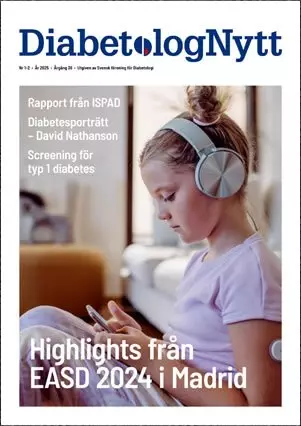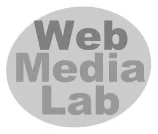SAN FRANCISCO — An ultra-rapid inhaled insulin that approximates glucose excursions following meals is a non-invasive, effective therapy for patients with type 1 or type 2 diabetes, according to research presented at the American Diabetes Association’s 74th Scientific Sessions.
Bruce W. Bode, MD, diabetes specialist with Atlanta Diabetes Associates in Atlanta, and Julio Rosenstock, MD, director of the Dallas Diabetes and Endocrine Center, shared results from studies comparing the inhaled treatment to either injections or oral anti-diabetic medications.
Utility in Type 1 Diabetes
Technosphere Insulin Inhalation Powder (TI) showed equivalent HbA1c reduction for patients with type 1 diabetes compared with subcutaneous rapid acting analog (RAA) insulin and demonstrated significant differences in total hypoglycemia and weight gain.
“TI provided effective glycemic control to subjects with type 1 diabetes and was not inferior in HbA1c reduction vs. insulin aspart,” Bode said during his presentation.
“There was significant weight can with insulin aspart vs. TI.”
In a 24-week trial at sites in the United States, Ukraine and Brazil, Bode and colleagues compared efficacy of prandial TI using the Gen2 inhaler (n=174) vs. RAA (n=171), both administered in conjunction with basal insulin, in patients with type 1 diabetes who had HbA1c between 7.5% and 10%. The researchers included another group of patients treated with TI, but using the earlier TI MedTone inhaler (n=173) to gauge pulmonary safety.
Treatment using TI with basal insulin (Gen2) was non-inferior to RAA with basal insulin in improving HbA1c (–0.21% vs. –0.4%; difference of 0.19%; 95% CI, –0.02 to 0.36). Using TI with basal insulin, patients also saw improvements in fasting plasma glucose as compared to the group using RAA with basal insulin (difference of –35.42 mg/dL; 95% CI, –56.25 to –14.59) and weight change (difference of –1.32 kg; 95% CI, –2.33 to –0.31).
Hypoglycemia events occurred less with TI than RAA, with significance changes observed in total hypoglycemia (9.80 vs. 13.97, P<.0001) and glucose <36 mg/dL (11.64 vs. 25.57; P=.0009). By the end of the study, hypoglycemia event rates were lower with TI at all HbA1c levels (≤6.5%, ≤7.0 and ≤8.0%).
The difference between the two inhalers in pulmonary function tests, including change in forced expiratory volume at 1 second, were not significantly different. Cough was reported more with TI than RAA (31.6% vs. 2.3%).
“This did not cause a large dropout; there was a small decrement in pulmonary function that was reversible,” Bode said. “TI had significantly less hypoglycemia no matter how you looked at it.”
TI in type 2 diabetes
Patients with type 2 diabetes who have not achieved adequate control with oral anti-diabetic treatments could benefit from the addition of TI inhalation powder, according to another presentation at the conference.
In a 24-week, double-blind study, Rosenstock and colleagues compared the effects of TI (n=177) vs. placebo (n=176) on insulin-naïve patients with type 2 diabetes who had HbA1c levels ≥7.5% and ≤10% on metformin only or >2 oral anti-diabetic medications.
“TI as the initial prandial insulin in patients with type 2 diabetes compared with one or more oral agents effectively reduced postprandial glucose excursion consistent with its time-action profile,” Rosenstock said during his presentation. “It was associated with increased, mild hypoglycemic events and neutral body weight changes.”
Patients achieved better HbA1c reduction with TI compared with placebo (–0.82% vs. –0.42%; treatment difference, 0.40%; 95% CI, –0.57 to –0.23). The proportion of participants in the TI group who reached an HbA1c of ≤7.0% was greater with TI than placebo (38% vs. 19%, P=.0021).
On average, fasting plasma glucose decreases from baseline were 11 mg/dL with TI and 4 mg/dL with placebo. Weight change increased in the TI group but decreased in the placebo group (+0.49 kg and –1.13 kg, P<.0001).
TI was also effective in controlling postprandial glucose excursions. The hypoglycemia event rate for patients per month was higher with TI compared with placebo (1.16 vs. 0.50; P<.0001); total number of severe hypoglycemia events was low and, per 100 subject-months, not statistically different (2.37 vs. 0.60 respectively).
The background therapy for the patients may explain why the patients experienced more hypoglycemia.
“If we had less sulfonylurea,” Rosenstock said, “it is highly conceivable that we would have had much, much less hypoglycemia.”
For More Information:
Bode BW. Abstract 127-OR. Presented at: American Diabetes Association’s 74th Scientific Sessions; June 13-17, 2014; San Francisco.
Rosenstock J. Abstract 128-OR. Presented at: American Diabetes Association’s 74th Scientific Sessions; June 13-17, 2014; San Francisco.
From http://www.healio.com/
Nyhetsinfo
www red DiabetologNytt





